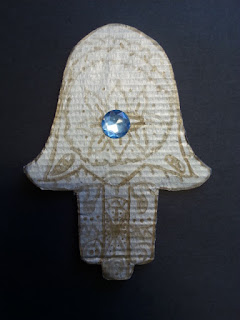After a few years of having this project on my 'to teach' list, I finally got around to trying paper plate weaving with my Grade 4-6 mixed class. I saw the original idea HERE on the amazing website of Cassie Stephens. I followed her direction exactly and the weavings turned out really well.
I HIGHLY recommend only using Chinet brand plates as Cassie states. I tried it with a thinner paper plate and it did not hold up well. So stick with Chinet or the sturdiest brand you can find.
Students started off by painting their plates using tempera. They could use any colours/patterns they wanted to. They had a lot of fun with this step and thought it was pretty cool painting on plates.
They didn't fit in my drying rack so we left them on the floor to dry overnight.
I collected yarn like a madwoman from garage sales and thrift stores. Then a colleague, who I was sharing yarn with, colour coded all the yarn into different plastic bags- sweet! I laid all these out onto a couple of tables so my kids could see the variety of colours and textures available.
Following the directions on Cassie's blog, students wrapped their warp (I demonstrated two times, then we did it together) and then they started weaving using the same warp string. My kids have done paper weaving before and most caught on pretty quickly. Once they have had enough of one colour, they tie on a new colour and keep weaving.
The kids LOVED this project and they all turned out really nice :)






































